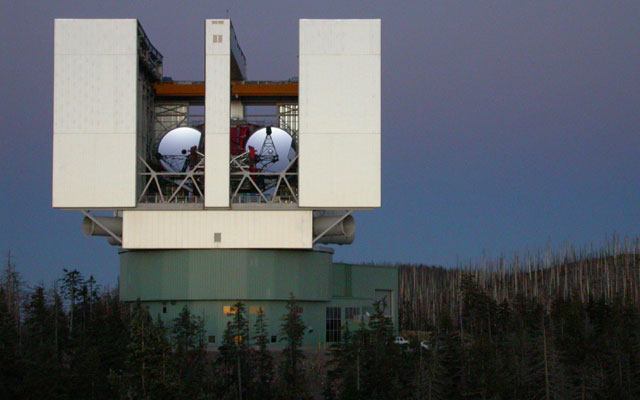
From NASA's PlanetQuest
The Large Binocular Telescope Interferometer (LBTI) will study the formation of solar systems and will be capable of directly detecting giant planets outside our solar system.
Two 8-meter class telescopes on Mount Graham, Arizona, will be connected in an infrared interferometer. The resulting instrument will have a maximum baseline of 22.8 meters.
Because of its unique geometry and relatively direct optical path, the LBTI will offer science capabilities that are different from other interferometers. It will provide high-resolution images of many faint objects over a wide field-of-view, including galaxies in the Hubble Deep Field with 10 times the Hubble resolution.
Nulling techniques will enable the LBTI to study emissions from faint dust clouds around other stars. These dust clouds reflect light and give off heat, and so interfere with the search for planets. By helping to characterize these emissions, the LBTI will provide critically needed data for the design of the Terrestrial Planet Finder, a future mission that will study planets orbiting nearby stars.